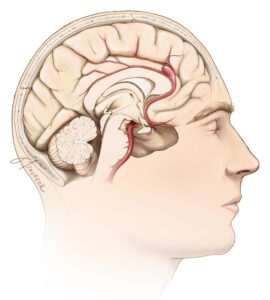Peripheral Aneurysm Symptoms
A peripheral aneurysm is a bulging or ballooning of the blood vessel that occurs in the neck, arm, or leg. It can be caused by years of high blood pressure or other conditions. Peripheral aneurysms are generally painless, but they may cause symptoms such as:
1. A Lump or Mass Felt Under the Skin
 A lump or mass felt under the skin may be a sign of an aneurysm. In fact, this is one of the most common symptoms of peripheral aneurysm and it can occur in any part of the body where there are arteries supplying blood to organs and tissues. The bulge may be felt anywhere along its length or at its origin or distal end (the head).
A lump or mass felt under the skin may be a sign of an aneurysm. In fact, this is one of the most common symptoms of peripheral aneurysm and it can occur in any part of the body where there are arteries supplying blood to organs and tissues. The bulge may be felt anywhere along its length or at its origin or distal end (the head).
In addition to being painful, these lumps also cause tenderness and warmth in their vicinity as well as discoloration. If you notice any changes in your skin coloration while you’re experiencing these sensations, it could mean that aneurysms have formed at various locations throughout your body—a condition known as polyarteritis nodosa (PAN).
- Pain, Tenderness, And Throbbing Near the Affected Area
Common symptoms of peripheral aneurysms include pain and tenderness in the affected area. Some people with a peripheral aneurysm also experience throbbing pain, which can be felt in the affected area or radiate to other parts of the body.
3. Swelling Near the Affected Area
Swelling is a common symptom of peripheral aneurysms. It can be mild or severe and may not be visible unless you look closely.
It’s also common for swelling to be present when you first notice the symptoms from a peripheral aneurysm, but it can also happen days later.
If your swollen area has decreased in size since you first noticed it, then it’s likely that the problem will go away on its own over time without any treatment needed.
4. A Sensation of Warmth Over the Affected Area
If you don’t have an aneurysm, it’s hard to describe what this sensation is like. It’s a warm sensation that starts at the affected area and then spreads down into your arm or neck. If you do have an aneurysm, it can feel like a burning sensation or even a sharp pain when you breathe deeply or cough.
5. Discolored Skin, Usually Reddish or Bluish In Color
Discolored skin is a common peripheral aneurysm symptom. This may take the form of redness or bluish discoloration, but it can also change color depending on what else is going on in your body. It’s important to see a doctor if you notice any changes in skin tone, since discolored skin can be caused by other conditions such as heart disease and blood clots.
Contact the Specialists
Peripheral aneurysms are more common than you might think. It’s important to know what symptoms to look for if you have a peripheral aneurysm so that you can seek treatment and prevent complications.
Peripheral aneurysms can be dangerous if not treated, but there are many options available for treatment of this condition. If you suspect that your body has a peripheral aneurysm, don’t hesitate to get it checked out by your doctor!
At Milner Vein & Vascular, we understand that you have a choice when it comes to your vein treatment. We’re proud to offer the most advanced and minimally invasive treatments, so you can find relief from your symptoms without sacrificing quality of life.
Whether you’re looking for a new vein doctor or just want to learn more about your vascular health, we invite you to contact us today. Our experienced doctors will help you determine which treatment plan is right for you, and they always make themselves available for same-day appointments.
